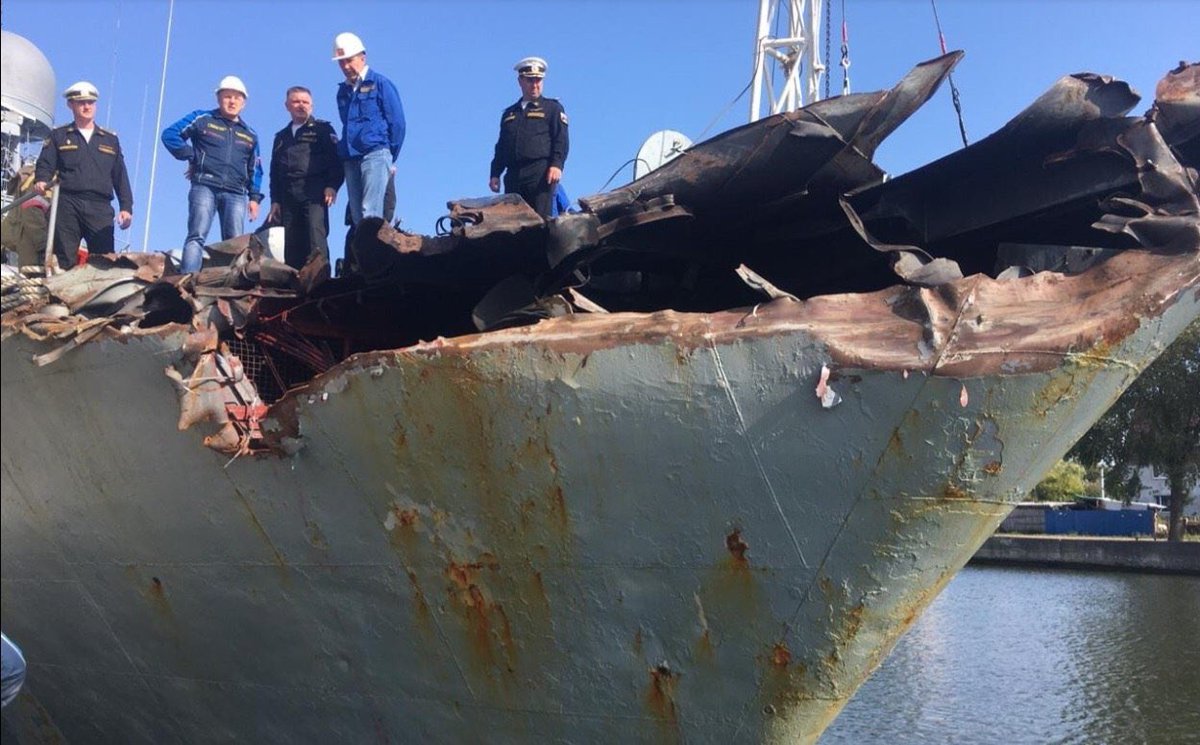On Wednesday, the Russian Navy Kazanets Project 1331M small anti-submarine ship collided with the Ice Rose cargo ship (pictured with damage) near the Øresund Bridge between Denmark and Sweden.
t.me/new_militaryco…
t.me/new_militaryco…

The Kazanets returned to Baltiysk and will be repaired at the 33rd Shipyard and is expected to return to service. The commander of the Russian Navy Admiral Nikolai Yevmenov traveled to the Baltic Fleet to investigate. 2/
interfax.ru/russia/728635
iz.ru/1065022/2020-0…
interfax.ru/russia/728635
iz.ru/1065022/2020-0…
Photo of the Baltic Fleet’s Urengoy Project 1331M small anti-submarine ship that was traveling with the Kazanets. The photo is taken from a hole in the Ice Rose caused by its collision with the Kazanets. 4/
t.me/bmpd_cast/3692
t.me/bmpd_cast/3692

Photo of the Baltic Fleet’s Kazanets Project 1331M small anti-submarine ship after colliding with the Ice Rose cargo ship near the Øresund Bridge. 5/
t.me/bmpd_cast/3708
t.me/bmpd_cast/3708

Two more photos of the Baltic Fleet’s Kazanets Project 1331M small anti-submarine ship after colliding with the Ice Rose cargo ship near the Øresund Bridge between Denmark and Sweden on Wednesday. 6/
t.me/bmpd_cast/3740

t.me/bmpd_cast/3740


• • •
Missing some Tweet in this thread? You can try to
force a refresh




















